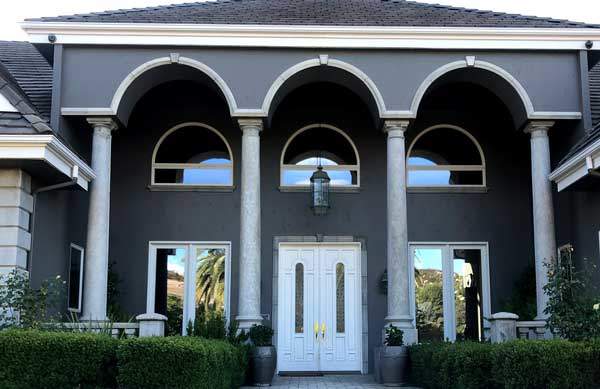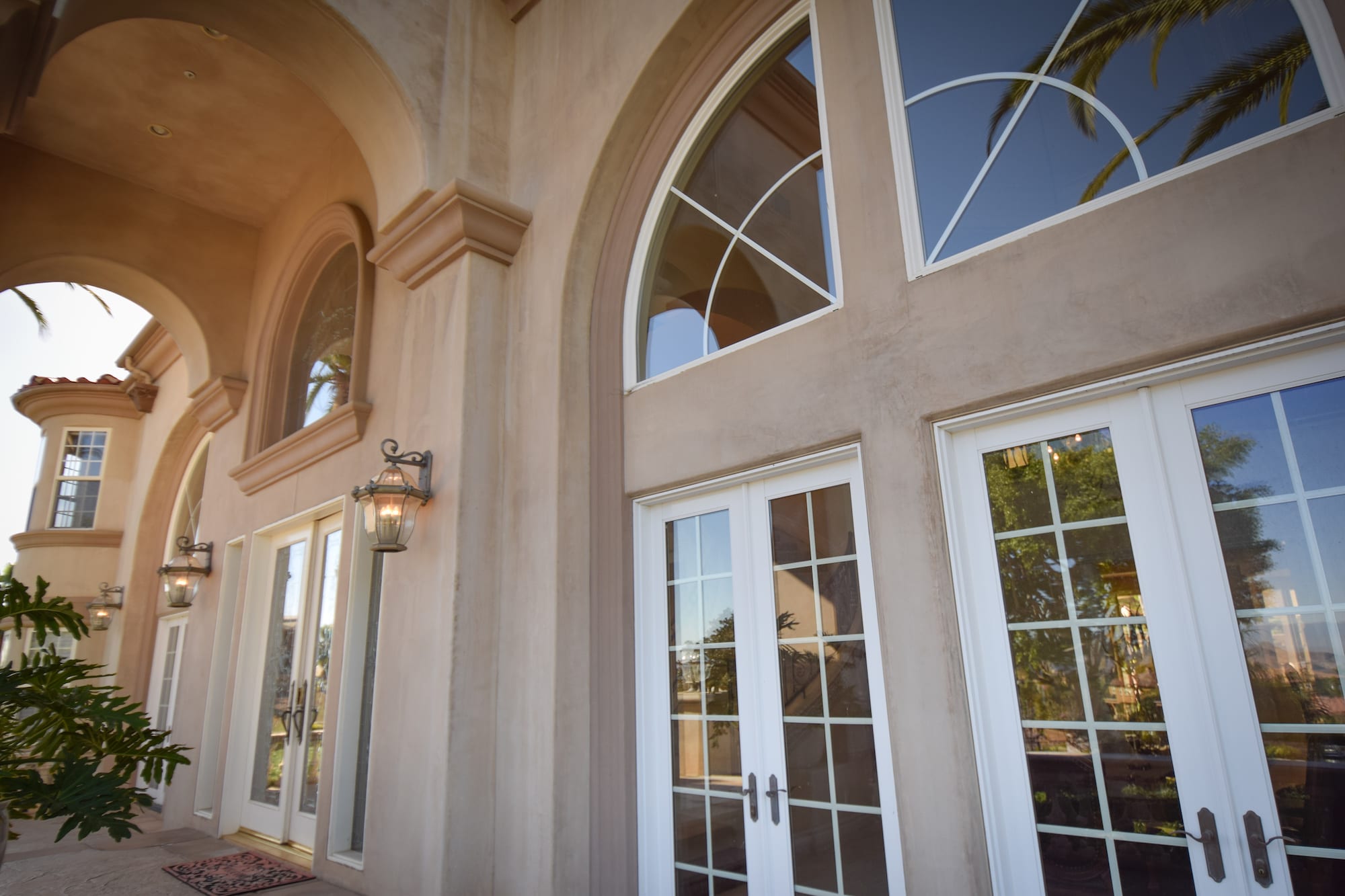Residential Window Tint: An Overview to Selecting the Right Shade
Residential Window Tint: An Overview to Selecting the Right Shade
Blog Article
How Residential Window Tinting Boosts Your Home's Power Efficiency
Residential window tinting provides an engaging service for house owners looking for to enhance energy performance within their living spaces. By using specialized movies to windows, it successfully lowers warmth transfer, therefore maintaining indoor temperatures and minimizing the demand for excessive heating or air conditioning. This not only curtails energy intake yet likewise supplies a much more comfortable environment by alleviating glow. Recognizing the subtleties of how tinting jobs and choosing the proper kind for your home can be crucial. Curiously, what variables should one take into consideration prior to making this investment?
Understanding Home Window Tinting
Understanding home window tinting is necessary for property owners looking for to improve both comfort and energy efficiency in their living spaces. Residential Window Tint. Window tinting includes the application of a slim film to the inside or outside surface of glass windows. This movie can substantially modulate the quantity of sunshine and warmth that gets in a home, thus influencing indoor climate problems
There are various kinds of window tinting films available, each with distinctive residential or commercial properties. For example, colored films take in solar power, while reflective films disperse it far from the glass surface area. Ceramic movies use an equilibrium of exposure and warm denial, making them a preferred option among homeowners. The efficiency of home window tinting is usually determined by its Visible Light Transmission (VLT) percentage, which suggests just how much light can travel through the movie.
Advantages of Power Efficiency
Home window tinting not just enhances visual appeals however also plays a considerable role in enhancing power efficiency within domestic areas. By minimizing warm transfer via home windows, tinted films produce a more secure indoor environment, which can cause considerable reductions in energy usage for heating and air conditioning. This power efficiency translates into lower utility costs, supplying home owners with considerable long-term financial savings.

In addition, window tinting boosts the convenience of living areas. By lessening glow and blocking dangerous UV rays, colored windows create a more positive atmosphere, which can cause improved wellness for residents. The protection versus UV rays additionally assists preserve furnishings and flooring from fading, contributing to the durability of house items.
How Tinting Functions
Tinting movies operate with a mix of sophisticated materials and technologies designed to manage the quantity of solar power entering a home. Largely composed of polyester, these movies typically integrate ceramic or metallic fragments that absorb and mirror warm. This double capability allows them to significantly lower the penetration of ultraviolet (UV) rays and infrared radiation while permitting noticeable light to go through.
The performance of home window tinting is determined by its solar heat gain coefficient (SHGC), which shows just how much solar energy is transmitted via the window. Reduced SHGC worths are better as they denote greater warm being rejected. Additionally, window colors can feature a variety of tones, enabling home owners to personalize their visual choices while enhancing energy efficiency.
In addition, these movies work as a barrier, protecting against heat loss during chillier months by mirroring interior heat back right into the living room. This thermal insulation result complements the cooling advantages gotten during warmer months, adding to a well balanced interior environment year-round. By handling solar power efficiently, household window tinting not just boosts convenience but likewise plays a vital duty in decreasing power consumption and lowering energy expenses.
Selecting the Right Tint

There are various types of home window films readily available, more info here consisting of dyed, metalized, and ceramic. Colored movies are cost-efficient however may have limited resilience. Metalized films use far better warmth being rejected but can hinder digital signals. Ceramic movies provide outstanding heat control without endangering visibility and are very long lasting, making them a preferred selection.
Visible light transmission (VLT) is an additional vital factor, as it indicates the quantity of all-natural light that can pass via the tinted glass. Homeowners must select a tint with a VLT that matches their illumination preferences while still offering appropriate glow decrease.
Additionally, analyzing the solar warmth gain coefficient (SHGC) can help figure out just how well a tint can obstruct warmth from sunshine. A reduced SHGC indicates better warm control, eventually boosting power performance.
Installation and Upkeep Tips
Proper installation and maintenance are crucial components in optimizing the benefits of residential home window tinting. Specialists additionally utilize specialized methods and devices, which can improve the toughness and efficiency of the color.
Complying with installment, upkeep is necessary to prolong the life of the home window film. It is advised to wait a minimum of 30 days before cleaning these details the colored windows to permit the sticky to heal completely. When cleansing, utilize a soft fabric and a mild, ammonia-free cleaner to stay clear of harming the film. Avoid abrasive products that can scratch the surface area.
Addressing these problems immediately can prevent further damages and keep energy efficiency. By sticking to these installation and upkeep suggestions, homeowners can guarantee their window tinting proceeds to provide substantial power financial savings and comfort for years to come.
Final Thought
To conclude, domestic window tinting functions as a reliable service go to this web-site for boosting power efficiency within homes. By lowering heat transfer and blocking damaging UV rays, window films add to decrease energy intake and enhanced interior convenience. The option of appropriate tinting products, together with correct installment and maintenance, additionally takes full advantage of these benefits. Eventually, home window tinting represents a sustainable investment that not only decreases energy bills but likewise promotes a comfy living environment throughout the year.
Home window tinting involves the application of a thin film to the inside or outside surface of glass windows. By minimizing warm transfer with home windows, colored films develop an extra secure indoor climate, which can lead to considerable reductions in power consumption for home heating and cooling.The efficiency of window tinting is determined by its solar warmth gain coefficient (SHGC), which shows how much solar power is transmitted through the home window. By managing solar power successfully, domestic window tinting not just improves comfort but additionally plays a vital duty in reducing energy intake and reducing utility costs.
By decreasing warm transfer and obstructing harmful UV rays, home window films add to decrease power usage and improved indoor convenience.
Report this page